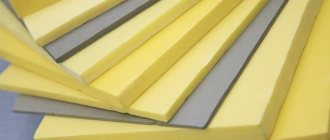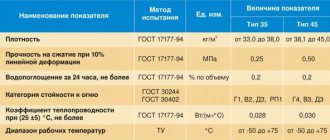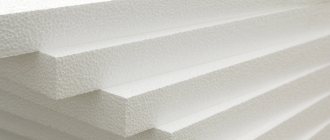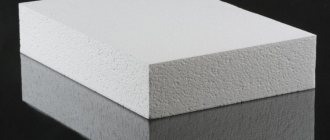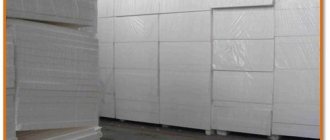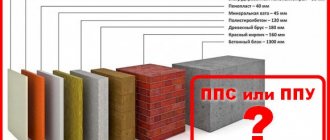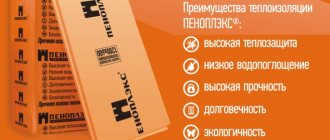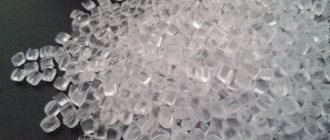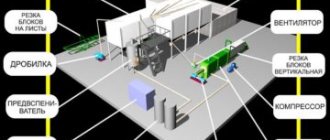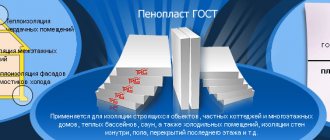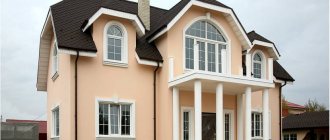Penoplex is used very often as a heat-insulating material. And in many cases, owners are going to glue foam boards to the walls.
When you plan to attach penoplex to the facade in this way, it is important to choose the right glue for it. There are a lot of adhesive options for extruded polystyrene foam. Moreover, not all of them are suitable for both external and internal work.
Penoplex boards vary in density.
This indicator largely determines how good the gluing of the insulation to the surface of the facade will be. Certain versions of extruded polystyrene foam can only be fixed with facade cement adhesive or exclusively with bitumen mastic. Other types of penoplex even require the use of special glue or foam.
How to glue extruded polystyrene foam
From the above it follows that choosing the right adhesive for polystyrene foam is not easy. The adhesive compositions themselves usually contain many components. For example, it could be bitumen with a solvent.
Another option is a one-component adhesive foam. The representative of the first group is Bitumast. The second includes ST 85 Ceresit.
Be that as it may, it is advisable to use substances that do not contain acetone or gasoline to create a reinforcing adhesive layer.
Such components can dissolve the thermal insulation materials themselves. In addition, the glue can be universal or specialized. If the first can be used for almost any insulation, then the second is intended specifically for polystyrene foam.
Choosing the best glue for polystyrene foam
There are many facts that need to be taken into account when choosing an adhesive. In addition to such aspects as the cost of the material and the principles of its use, the purpose of the adhesive composition should also determine the purchase. It can be used for internal and external procedures.
Bitumen adhesive for polystyrene foam
The basis of the composition of bitumen adhesive is bitumen. Plasticizers and solvent are also added to it. The peculiarity of bitumen glue is that it increases the waterproofing capabilities of the working base.
The material allows you to fasten the insulation boards both to the surface and to each other. In order for the result of using Bitumast glue to be good, the base under it must first be dried and sanded. It will be possible to further increase the consolidation of the material if you cover the surface with a primer, which will rid the base of unnecessary pores.
It will be possible to properly glue penoplex if you apply Bitumast in a continuous layer of small thickness. In this case, a comb spatula is used. Within 20 minutes after applying the polystyrene foam boards, additional pressure must be provided, that is, spacers must be installed.
Cement-polymer adhesive
The composition called ANSERGLOB BCX 39 is intended for installation on materials such as concrete, brick and even wood. It can be used for outdoor and indoor events.
Mixtures of this type consist of a complex of elements such as Portland cement and a plasticizer. Other additional components are also added to them. A deep primer of the surface is required before application.
Water- and frost-resistant adhesive AKVALIT SK-106P ensures reliable installation of insulation boards on the exterior of a building.
The product, which is called ECOMIX on the market, is in demand for interior work and is used to create a covering layer of insulation. Another solution is “MASTER SUPER”. Designed for laying heat insulation on a load-bearing base.
Adhesive foam for penoplex
A separate category of adhesive materials for polystyrene foam is polyurethane foam. The most famous representatives of this group are Ceresit CT 84, TechnoNIKOL and Tytan Styro 753.
The peculiarity of adhesive foam is its rapid setting, which occurs in 10 minutes. One cylinder of such material is enough to complete a job that requires 25 kg of regular mixture. This volume of polyurethane foam is enough to cover an area of 10 m2.
When using adhesive foam, it is important to apply the material to the insulation so that it extends 2 cm from the edges.
The foam is also applied diagonally. After this, the slab is placed on the working base, taking into account the dressing requirements. TechnoNIKOL foam is placed in the gaps remaining between the plates.
You can achieve good results using adhesive foam if you prepare the surface very well. But despite the labor intensity, the result is completely worth it. Therefore, the use of polyurethane foam to secure penoplex is considered the best option, because it is possible not only to securely secure the insulation, but also to generally provide decent thermal insulation.
Polystyrene is often used in construction, as this material has proven itself to be a good insulator. During repair work, it often becomes necessary to glue blocks of material together or glue them to other surfaces, so the question of how to glue extruded polystyrene foam and regular polystyrene is relevant. This is usually done using special adhesives.
Choosing glue for extruded polystyrene foam
Penoplex is used very often as a heat-insulating material. And in many cases, owners are going to glue foam boards to the walls.
When you plan to attach penoplex to the facade in this way, it is important to choose the right glue for it. There are a lot of adhesive options for extruded polystyrene foam. Moreover, not all of them are suitable for both external and internal work.
Penoplex boards vary in density. This indicator largely determines how good the gluing of the insulation to the surface of the facade will be. Certain versions of extruded polystyrene foam can only be fixed with facade cement adhesive or exclusively with bitumen mastic. Other types of penoplex even require the use of special glue or foam.
How to glue extruded polystyrene foam
From the above it follows that choosing the right adhesive for polystyrene foam is not easy. The adhesive compositions themselves usually contain many components. For example, it could be bitumen with a solvent. Another option is a one-component adhesive foam. The representative of the first group is Bitumast. The second includes ST 85 Ceresit.
Be that as it may, it is advisable to use substances that do not contain acetone or gasoline to create a reinforcing adhesive layer. Such components can dissolve the thermal insulation materials themselves. In addition, the glue can be universal or specialized. If the first can be used for almost any insulation, then the second is intended specifically for polystyrene foam.
Choosing the best glue for polystyrene foam
There are many facts that need to be taken into account when choosing an adhesive. In addition to such aspects as the cost of the material and the principles of its use, the purpose of the adhesive composition should also determine the purchase. It can be used for internal and external procedures.
Bitumen adhesive for polystyrene foam
The basis of the composition of bitumen adhesive is bitumen. Plasticizers and solvent are also added to it. The peculiarity of bitumen glue is that it increases the waterproofing capabilities of the working base. The material allows you to fasten the insulation boards both to the surface and to each other. In order for the result of using Bitumast glue to be good, the base under it must first be dried and sanded. It will be possible to further increase the consolidation of the material if you cover the surface with a primer, which will rid the base of unnecessary pores.
It will be possible to properly glue penoplex if you apply Bitumast in a continuous layer of small thickness. In this case, a comb spatula is used. Within 20 minutes after applying the polystyrene foam boards, additional pressure must be provided, that is, spacers must be installed.
Cement-polymer adhesive
The composition called ANSERGLOB BCX 39 is intended for installation on materials such as concrete, brick and even wood. It can be used for outdoor and indoor events. Mixtures of this type consist of a complex of elements such as Portland cement and a plasticizer. Other additional components are also added to them. A deep primer of the surface is required before application.
Water- and frost-resistant adhesive AKVALIT SK-106P ensures reliable installation of insulation boards on the exterior of a building. The product, which is called ECOMIX on the market, is in demand for interior work and is used to create a covering layer of insulation. Another solution is “MASTER SUPER”. Designed for laying heat insulation on a load-bearing base.
Adhesive foam for penoplex
A separate category of adhesive materials for polystyrene foam is polyurethane foam. The most famous representatives of this group are Ceresit CT 84, TechnoNIKOL and Tytan Styro 753. The characteristics of the adhesive foam are its rapid setting, which occurs in 10 minutes. One cylinder of such material is enough to complete a job that requires 25 kg of regular mixture. This volume of polyurethane foam is enough to cover an area of 10 m2.
When using adhesive foam, it is important to apply the material to the insulation so that it extends 2 cm from the edges. The foam is also applied diagonally. After this, the slab is placed on the working base, taking into account the dressing requirements. TechnoNIKOL foam is placed in the gaps remaining between the plates.
You can achieve good results using adhesive foam if you prepare the surface very well. But despite the labor intensity, the result is completely worth it. Therefore, the use of polyurethane foam to secure penoplex is considered the best option, because it is possible not only to securely secure the insulation, but also to generally provide decent thermal insulation.
What adhesives are there for polystyrene?
Foam adhesive is often used for polystyrene - a material that is completely ready for use. It is usually packaged in pressurized cylinders.
This glue is not expensive, but you can work with it even at low temperatures. Foam adhesive is very economical - for high-quality adhesion of polystyrene blocks, you need very little of this base.
The following brands are popular among such adhesives:
- “Titan 753” (additionally protects the material from mold); Illbruck pu 10 (resistant to chemical influences and insulates heat/sound well); Eskaro Styropor (glues very quickly, evens out unevenness).
You can also use Moment glue for gluing polystyrene - if it is difficult to find special materials, it would be more effective to glue polystyrene.
Adhesives for polystyrene foam
Adhesive bases for polystyrene foam are sold dry - before use they must be diluted in water in the specified proportion. It is important that no lumps form; you can use an electric stirrer for this. You need to stir the mixture several times at intervals of 5 minutes.
If there are minor irregularities at the gluing site (up to 3 mm), the glue should be applied with a notched trowel over the entire surface of the polystyrene foam. You need to press the joint immediately after applying the base. It is better if the vertical seams of the slabs do not match (especially if you need to glue the slab to the wall).
If the joint surface has significant unevenness (up to 5 cm), you need to apply glue to the block in strips with breaks. In this case, it is better to retreat 2 cm from the edges.
The following brands of adhesives are popular (this is what glues polystyrene foam with as efficiently and quickly as possible):
- Bergauf Isofix; Ceresit CT 83; TechnoNIKOL No. 500; Tytan Styro 753 GUN (Poland).
These adhesives hold up well in humid environments and are resistant to fungus.
The correct selection of glue for polystyrene and expanded polystyrene is the key to good adhesion of the blocks to each other, and therefore the quality of repair work.
See also:
Where to recycle waste, equipment and other things in your city
Also on the site:
Next >>
Extruded polystyrene foam for insulating a balcony with Penoplex is an extremely useful and easy-to-use material. It is used as insulation, a decorative element (ceiling tiles, stucco molding, etc.) and many other similar areas.
In construction, extruded polystyrene foam or penoplex has gained its popularity due to its unique characteristics and extreme unpretentiousness.
Comparison of polyurethane adhesives for penoplex
However, it is also important to understand how to work with this type of material. You may need to use a special adhesive for extruded polystyrene foam. This is what we will now discuss in this article.
Best Styrofoam Adhesive for Exterior Use
The main requirements for a composition for external use are resistance to low and high temperatures, quick adhesion to the surface, reliable fixation of the surfaces to be bonded and ease of use.
Knauf Klebenspachtel
Knauf Klebespachtel is a mineral-cement composition for gluing thermal insulation boards and laying fiberglass reinforcing mesh. Can be used separately as plaster. For outdoor work. High adhesion to most surfaces. A bag of powder is diluted in 8 liters of water. Layer no more than 5 mm.
Knauf Klebenspachtel
Specifications:
| Particle sizes, mm | 1 |
| Compressive strength, MPa | 7 |
| Consumption, kg/sq.m | 4-5 |
| Drying time, h | 72 |
| Packaging, kg | Paper bag, 25 |
One of the disadvantages is that during installation the required wall or air temperature should not be lower than +5 °C. No extraneous ingredients should be added.
Tytan Styro 753 GUN
Polyurethane adhesive for PPS – attached to foam blocks and wood; aerated concrete, concrete and brick surfaces at an air temperature of 0/+30ºC. Suitable for external insulation work. Quick drying - 2 hours, allows for residual manipulations with polystyrene foam: attaching dowels and preparing for cladding.
Tytan Styro 753 GUN
Specifications:
| Particle sizes, mm | 0,1 |
| Compressive strength, MPa | 9 |
| Consumption, ball/sq.m | 8 |
| Drying time, h | 24 |
| Packaging, ml | Cylinder, 750 |
Blue foam has very high adhesive properties, but also a pungent odor. It is used only for external work - reinforcing and gluing slabs. The master has a quarter of an hour to adjust the position of the slab, while the foam remains soft, after which setting occurs. Within a day you can begin decorative finishing. The price of the cylinder is 420 rubles.
Ceresit CT 83 Strong Fix
Soluble mixture based on Portland cement. Designed for gluing polystyrene foam boards, as well as extruded polystyrene foam to mineral and organic substrates. Has high adhesion. The plastic mixture is easily applied to the surface. Before application, it is necessary to carry out preparatory work: dry and clean from dirt, dust and paint coatings. If the temperature of the substrate to be coated is 0°C...+5°C, the powder must be diluted with water at a temperature not lower than +20°C. Mixing is carried out with a drill with a mixing attachment at a speed of 400-600 rpm. Let the mixture sit for 5 minutes and stir again.
Ceresit CT83 Strong Fix
Specifications:
| Particle sizes, mm | 0,1 |
| Compressive strength, MPa | 7 |
| Consumption, kg/sq.m | 6 |
| Drying time, h | 24 |
| Frost resistance, cycle | 100 |
| Temperature for installation work | from 0°C to +30°C |
| Operating temperature | from –50°C to +70°C |
| Packaging, kg | Multilayer paper bag, 25 |
25 kg of dry mixture (bag) is diluted with 5.7 liters of warm water. The mobility of the solution is maintained for 20 minutes, during which time it is still possible to correct the position of the slab. The color of Ceresite is gray. Characterized by high vapor permeability. The price of the bag is 460 rubles.
Bitumast
Strong adhesion is provided by resinous bitumen. Adhesive for extruded polystyrene foam. The reliability of the composition allows it to be used for insulating foundations, underground parts of premises, roofing and horizontal surfaces in places with high levels of humidity. Adhesion to all types of surfaces. Requires dilution to a liquid consistency, used in a thin layer.
Bitumast
Specifications:
| Consumption, kg/sq.m | 0,5 |
| Drying time, h | 48 |
| Frost resistance, cycle | 100 |
| Temperature for installation work | from 0°C to +30°C |
| Operating temperature | from –50°C to +70°C |
| Packaging, kg | Bucket, 5 and 21.5 |
Price 5 kg – 560 rubles; 21.5 kg – 1800 rub. It is strictly forbidden to use it on facades and indoors.
Prospectors Teploizol
It is used for installation of thermal insulation boards, including polystyrene foam, inside and outside buildings. 1 kg of the mixture is diluted in 230 g. water at room temperature. Apply a thin layer of 2-4 mm. After 24 hours, you can further secure it with dowels. The viability of the solution is 3 hours.
Prospectors Teploizol
Specifications:
| Consumption, kg/sq.m | 3-4 |
| Drying time, h | 24 |
| Frost resistance, cycle | 50 |
| Temperature for installation work | from 0°C to +30°C |
| Operating temperature | from –50°C to +70°C |
| Packaging, kg | Paper bag, 25 |
The solution sets quickly, so the slabs must be installed carefully. The price of the bag is 339 rubles.
1Installation features
Penoplex itself is extruded polystyrene foam. That is, in many ways it repeats the properties of polystyrene foam as insulation. But its structure is already different, since being extruded, it is melted in special furnaces.
At the end, standard polystyrene foam raw materials for base insulation with Penoplex are strongly glued together, forming a dense, reliable structured slab. There are no individual balls in it, as is seen in conventional foam. On the contrary, the entire slab consists of uniform foamed polymer material.
A significant proportion of the total mass of the penoplex slab is occupied by air. Extruded polystyrene foam consists of polymer and air beads with a diameter of up to 1 mm.
An important nuance here is that polystyrene foam acts as insulation. It is also often used to create ceiling tiles, decorative elements and other similar tasks, that is, to shape the appearance or thermal insulation of structures.
This means that for decorative boards, both in the form of insulation and for ceiling or any other decorative finishing, it should be specially glued to the structure. And glue it well.
And this is where the main problem lies. Penoplex, as we have already noticed, is very dense and uniform. Its face area is too smooth to adhere well to other designs or adhesives.
The relatively low adhesion rate of penoplex insulation is the main problem when working with extruded polystyrene foam.
And it is simply necessary to correct it. After all, you need to glue the penoplex in any case and glue it in such a way that there is no longer any doubt about the strength of the entire structure.
You don’t want the entire structure of insulation, finishing layer and frame to fall apart, do you?
2Selection of suitable glue
Adhesive for extruded polystyrene foam is produced in different configurations. Each specific type is suitable for performing certain jobs. For installation on concrete, some compounds are used, for fastening on the same concrete to bricks in the winter - others.
Adhesive for extruded polystyrene foam can be sold ready-made
Even more exotic substances are used when it is necessary to combine the properties of foam adhesive and insulation. For example, the same Warm Glue is a kind of universal composition, which also has reduced thermal conductivity.
That is, Thermal Glue is capable of not only gluing penoplex, but also improving the overall thermal insulation of the house.
What is very important, the adhesive mixture or glue for fastening polystyrene foam boards cannot contain solvents, acetone, alcohol substitutes, etc.
d. Such materials destroy the very body of penoplex as insulation. They eat away at it, and very quickly.
This, by the way, is another reason to use specialized mixtures such as Teplokley, Tytan Styro 753, Ceresit Ts-84 and others. Unlike homemade solutions, manufacturers of such materials know exactly what they are dealing with, which means the risk of damaging the insulation material is reduced to zero.
The adhesive mixture for penoplex can be produced in various variations, but all of them are one way or another divided into three subtypes. Most often used for insulation work:
Now let's look at each of these subspecies separately.
What are the types of polystyrene foam adhesives for interior and exterior use?
To install extruded polystyrene foam outside buildings, a special cement-mineral adhesive mixture is used (for greater reliability, the slabs are additionally secured with special umbrella dowels).
For internal work on insulating ceilings and walls, in most cases, compositions based on polymers and polyurethane are used.
Let's consider the characteristics of the most popular brands of adhesive for polystyrene foam boards .
- Penoplex FASTFIX glue is a special polyurethane adhesive designed for gluing thermal insulation boards made of extruded polystyrene foam to various types of bases: concrete, stone, aerated concrete, metal, brick, ceramic and expanded clay concrete blocks, plaster, etc.
The glue is sold in 750 ml metal containers (like professional polyurethane foam).
The composition has high adhesion to most building materials, and the convenient release form allows the use of a quick and convenient application method using a special mounting gun.
Complete hardening of the adhesive occurs after 24 hours, but the adhesive layer sets within just a few minutes.
Penoplex glue can be used for installing thermal insulation on external walls, foundations and bases of buildings, but more often glue of this format is used for internal thermal insulation of premises and insulation of balconies of city apartments.
2.1Bitumen glue
It is worth understanding that the bitumen-based assembly adhesive itself is more of a plaster-adhesive mixture. It’s just that bitumen is also added to its composition as the main binder.
The beauty of bitumen is its reliability and ability to combine perfectly with polystyrene foam itself. Bitumen adheres well to slabs and stays on them for a long time.
It also has excellent waterproofing qualities. Such a mixture will not only be able to adhere well to extruded polystyrene foam insulation to concrete or metal, but will also be able to protect the connections of external walls with each other using reflective hydrophobic properties.
Installing penoplex on the wall using glue
Another big advantage that the bitumen plaster-adhesive mixture has is the ability to mix it in a matter of minutes.
That is, you will not need to use a special tool. The same Warm Adhesive on penoplex for wall insulation is mixed using a regular mixer and water.
Bitumen based adhesive
Bitumen adhesive does not need to be heated before application
Bitumen adhesive is a plaster-adhesive mixture in which bitumen is used as a binder. It goes well with polystyrene foam and bonds it well to the surface being glued. Bitumen adhesive is plastic and does not require preheating before use.
Due to the content of bitumen in the adhesive, the surface covered with extruded polystyrene foam, provided that the adhesive is carefully applied to the surface of the materials, has high waterproofing qualities.
Related article: How to correctly measure a balcony block
This allows the use of this technology when insulating foundations, ground floor floors with polyurethane materials, when laying floors on the ground and in other cases when extruded polystyrene foam is used in structures exposed to moisture.
For high-quality adhesion of the bonded surfaces, it is necessary to pay attention to the application of the adhesive composition to the surface of the materials. It is distributed in a small even layer using a comb spatula.
This will not only firmly connect the materials used, but will also ensure the creation of a high-quality waterproofing layer between them. After this, you need to create a certain pressure on the materials being glued together for half an hour. This can be done using spacers, clamps or other available methods.
Preparation of bitumen-based adhesive does not require much effort and is carried out in a matter of minutes using an electric drill with an attachment in the volumes necessary for high-quality work.
2.2Polymer cement adhesive
Another type of composition that can be used to glue polystyrene foam. Unlike the bitumen sample, polymer-cement glue has much higher adhesive properties.
It can be used to glue any materials together.
Moreover, it can be glued for a long time, and without the use of any additional means. Adding polymers to the solution makes it more durable. After drying, it forms a dense crust.
The installation polymer-cement composition is ideally combined with reinforcement and external finishing of polystyrene foam.
It is also often used when it is necessary to glue ceiling tiles. For ceiling tiles, adhesion is necessary first of all, since the ceiling structure is subject to the load from its own weight more than any other.
In addition, penoplex on ceilings is usually glued to concrete. And it, as you probably already know, has weak adhesion to solutions.
If you are going to glue any materials to concrete, then this can only be done using a reliable composition for plastering or insulation work.
2.3Polyurethane glue
Polyurethane adhesive for polystyrene foam is used for the same work, only it has a completely different structure and even its purpose is different.
If the standard glue is the same mounting solution for ordinary plastering work (for example, a mixture of Warm Adhesive), then the polyurethane samples have the form of foam.
They are sold in cans, and slabs can only be glued using them using a mounting gun.
The composition is already ready for application and, in fact, is not much different from the same foam. It is a little thicker, has a different color, but otherwise completely replicates its properties.
Applying polyurethane glue to polystyrene foam board
To glue the slab to the base or glue them together, you will have to load the can into the gun and apply glue to the slab.
Polyurethane adhesive for insulation with Penoplex Comfort is more expensive than usual. It is intended for professional, large-scale work.
A prominent representative of this line is the Tytan Styro 753 model. The Tytan company produces building compositions from various elements. Their Styro line, and in particular Tytan Styro 753 adhesive, is rightly considered one of the most successful examples on the market.
Its characteristics cannot be called outstanding, but they are quite acceptable. After evaluating them, you will understand why polyurethane compounds are recommended for use when performing professional work on arranging thermal insulation from extruded polystyrene foam.
So, Tytan Styro 753:
- Dries within 2-3 hours; Economically consumed; Does not harm humans; Makes it possible to easily level the slab on three planes; Does not emit harmful substances; Does not require preparation; Attaches polystyrene foam to any surface.
Unlike other compounds, Titan Styro significantly simplifies all installation processes. With its help, you can glue slabs quickly and easily.
It cannot be said that other samples are seriously inferior to it, but if we talk about maximum efficiency, then it is the polyurethane composition that wins. The same Warm Glue must first be mixed, then applied to the stove (and in quite impressive quantities), and then wait almost a day until it completely sets.
However, polyurethane adhesives also have their disadvantages. They consist of an increased price and the need to have special equipment available. This refers to a construction foam gun.
Such a pistol can cost hundreds of dollars, which not everyone can afford. But you won’t be able to apply glue without a gun.
Cheap mechanical models can make a difference, but not much.
They are simply not designed to handle impressive jobs. You will get tired quickly, but you still won’t achieve the same efficiency.
Polyurethane foam adhesive
This glue sets within 10 minutes
Polyurethane foam is a very high-quality and reliable means for gluing extruded polystyrene foam to various surfaces. It sets after application to the surface of the material in no more than 10 minutes.
Article on the topic: How to lay a substrate under a laminate: working technology, tips
To glue polystyrene foam onto a surface of 10 m2, one can of foam is enough, while the consumption of the adhesive mixture on this surface ranges from 20 to 25 kg, depending on the type of mixture and the quality of the surfaces being glued. For more information on how and what to glue foam plastic with, watch this video:
The use of polyurethane foam glue has the following positive aspects:
- economical spending;
- does not emit harmful substances when used;
- dries after 2-3 hours;
- does not require additional surface preparation;
Polyurethane foam composition has a high price
With the help of foam, the process of gluing surfaces with extruded polystyrene foam is quick and easy. The disadvantage of this method is the high cost of polyurethane foam glue.
The standard consumption and capacity of the packaging and containers in which glue for polystyrene foam and polystyrene foam is supplied can be selected according to the data indicated in the table:
| Name of glue | Capacity | Consumption per 1m2 |
| Bitumen glue | From 1 to 50 l | From 1 to 1.5 kg |
| Polymer-cement | Bag 20-25 kg | From 4 to 5 kg |
| Adhesive foam | Cylinder 75-100 ml | 100 ml |
The use of the listed types of adhesive compositions and adherence to the technology and sequence of work stages will make it possible to paste polystyrene foam onto the treated surfaces easily, quickly and efficiently.
Application area
Extruded polystyrene foam is used to insulate walls outside and inside buildings. The material is attached to glue or a frame structure; the second option is rarely used, since the arrangement of the frame increases the cost of thermal insulation. Insulation with a thickness of 2-5 cm is suitable for walls; note that as the thickness of the thermal insulation increases, its soundproofing qualities also improve.
When insulating the floor, polystyrene foam boards are laid on a cushion of expanded clay or other low-density material, and concrete is poured on top. Such insulation protects from cold (ground floor) and noise (unlucky with neighbors), but requires raising the floor level, which is not always acceptable in an apartment.
When insulating foundations, the thermal insulation is fixed with glue to the base and additionally secured with mounting fasteners. The material protects basements from the cold and inhibits the release of basement concrete from exposure to the external environment.
On roofs, polystyrene foam is laid in front of the bitumen layer on the outside or between the ribs of the rafters inside the roofing pie. This applies to private houses; in apartments, thermal insulation is often used to insulate the outside of the ceiling of upper-floor apartments. In this case, insulation is laid on the attic side (with or without glue) and concreted on top or covered with a layer of fixing material (expanded clay, gravel, crumbs).
Features of polystyrene foam installation
The extruded type of EPS is a foamed material with a high degree of density. This is precisely the indicator that will distinguish it from simple polystyrene - polystyrene foam. The density will increase during production as it passes through the extruder, and this will seriously increase the thermal insulation properties of the materials. The end plates are made of polymer and small air bubbles.
Please note that due to the smoothness of the extruded polystyrene foam boards, they have a very weak degree of adhesion to the adhesive composition. This is the main problem when gluing. It is solved by choosing special compounds that themselves will have a high degree of adhesion to any type of surface. Some other types of products can partially dissolve the top of foam boards by being absorbed into them.
The specifics of installing polystyrene foam boards are as follows:
- If the material was purchased as an insulating agent for the floor surface, then it should be laid on a cushion of expanded clay or on a pad made of other low-density materials, and also poured with concrete.
- For foundation insulation, the slabs should be glued to the concrete of the base and secured with mounting fasteners.
- Lay materials on the roof, and then place a layer of bitumen or lay extruded polystyrene foam between the rafter ribs inside the roofing layers.
- When insulating the ceiling surface in an apartment, at the last stage, polystyrene foam should be laid from part of the attic onto an adhesive composition, and then concreted or covered with gravel, crumbs and expanded clay.
Let's look at how to choose an adhesive composition.
Tytan Styro 753 GUN
Tytan Styro 753 GUN adhesive is available in cylinders similar to polyurethane foam packaging, the cylinder capacity is 750 ml.
The adhesive has a polyurethane base and is suitable for interior and exterior use. The composition is applied to the inside of the slabs in strips, after which the material is applied to the wall and lightly pressed with a level during parallel alignment. One cylinder is enough for 10 m2 of insulation, and the high drying speed of the glue allows you to strengthen the thermal insulation with anchors within 2 hours.
The glue perfectly secures polystyrene foam boards to:
- – Plaster, – Concrete, – Wood, – Mastic, – Cement base, – Cured polyurethane.
When heated, the glue does not release isocyanates and is resistant to fungus, mold and heat up to 90 degrees.
Bergauf ISOFIX
Bergauf ISOFIX adhesive mixture consists of cement binder, mineral filler, sand and modifying additives.
Used for external and internal work, mixture consumption for a layer of 3 mm is 4-5.5 kg per m2 of insulation. The finished composition must be used within 90 minutes, and glued slabs must be adjusted within 25 minutes. The compressive strength of the adhesive after 28 days is 7.5 MPa, and the bending strength is 3 MPa.
The composition is suitable for almost all substrates, including drywall, bag weight 25 kg.
TechnoNIKOL No. 500 balloon adhesive is practically no different in its characteristics from Tytan Styro 753 GUN, although it costs a little less.
Use extruded polystyrene foam for the intended purpose provided by the manufacturer and do not buy unknown but cheap adhesives for its fastening - this is the road to losses, and not the path to savings.
Choosing adhesive for polystyrene foam
For fastening polystyrene foam, adhesives are used that are resistant to moisture and have high adhesive properties (adhesion). We advise you to pay attention to the glue:
- — Ceresit CT 83,
- — Tytan Styro 753 GUN (Poland),
- — Bergauf Isofix,
- — TechnoNIKOL No. 500.
Ceresit CT 83
Ceresit adhesive CT 83 is suitable for attaching polystyrene foam boards to facades, as it can withstand sub-zero temperatures and has high adhesion to concrete, brick and plaster. After drying, the composition is vapor permeable, and it is mixed in a plastic container using a mixer. The adhesive mixture is applied to the wall at a thickness of 1-2 cm along the entire perimeter of the insulation; it is advisable to use a notched trowel.
Tytan Styro 753 GUN
Tytan Styro 753 GUN adhesive is available in cylinders similar to polyurethane foam packaging, the cylinder capacity is 750 ml. The adhesive has a polyurethane base and is suitable for interior and exterior use. The composition is applied to the inside of the slabs in strips, after which the material is applied to the wall and lightly pressed with a level during parallel alignment. One cylinder is enough for 10 m2 of insulation, and the high drying speed of the glue allows you to strengthen the thermal insulation with anchors within 2 hours.
The glue perfectly secures polystyrene foam boards to:
- - Plaster,
- — Concrete,
- - Tree,
- — Mastic,
- — Cement base,
- — Cured polyurethane.
When heated, the glue does not release isocyanates and is resistant to fungus, mold and heat up to 90 degrees.
Bergauf ISOFIX
Bergauf ISOFIX adhesive mixture consists of cement binder, mineral filler, sand and modifying additives. Used for external and internal work, mixture consumption for a layer of 3 mm is 4-5.5 kg per m2 of insulation. The finished composition must be used within 90 minutes, and glued slabs must be adjusted within 25 minutes. The compressive strength of the adhesive after 28 days is 7.5 MPa, and the bending strength is 3 MPa.
The composition is suitable for almost all substrates, including drywall, bag weight 25 kg.
TechnoNIKOL No. 500 balloon adhesive is practically no different in its characteristics from Tytan Styro 753 GUN, although it costs a little less.
Use extruded polystyrene foam for the intended purpose provided by the manufacturer and do not buy unknown but cheap adhesives for its fastening - this is the road to losses, and not the path to savings.
